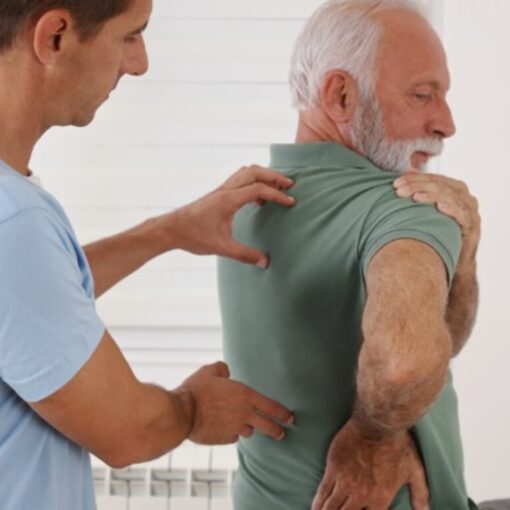There are many studies that support the theory that kinetic chain dysfunction in the lower extremities—the foot, ankle, knee, or hip injury and/or condition—can alter normal lumbo-pelvic biomechanics, which can lead to low back pain. Let’s take a look at how abnormal motion in the hip can affect the lower back.
A 2015 literature review looked at twelve studies on the correlation between hip rotation range of motion loss and low back pain and concluded that patients with low back pain are likely to exhibit impaired and asymmetrical total hip rotation range of motion (ROM).
Another study that included 40 low back pain patients—also published in 2012—looked at flexion (forward) and extension (backward) hip mobility and how that correlated with limitations in low back flexion and extension. The researchers found that 57.5% of the participants had a considerable loss of either hip flexion or extension, and they also experienced corresponding impairment in low back flexion or extension 78.3% of the time. A quarter of the participants had considerable loss in both hip flexion and extension, and 70% also had considerable loss in both low back flexion and extension. The remainder of participants (17.5%) had minimal loss of hip motion.
So, the first study noted that loss of hip rotation correlates with increased likelihood of having low back pain, and the second study found that patients with low back pain often experience impairments in hip motion that pair with restricted low back movement. To further investigate this intimate hip-low back relationship, the authors of a 2017 study examined 101 middle-aged low back pain patients with or without lower extremity pain and found that 80% of the patients in the study had both hip and low back findings, and these individuals had more intense pain and function loss than the participants without an accompanying hip issue. Hence, the authors conclude that low back pain is worse when hip problems exist.
This relationship isn’t limited to adults in mid- and late-life either. A 2022 study found that low back pain is common in high school tennis players, affecting about 30% in the previous year. A comparison of those with or without a recent history of low back pain revealed an association between restricted hip internal rotation of the non-dominant leg and low back pain.
The findings highlight the importance of examining the whole patient when they present with a condition such as low back pain because it’s common for issues outside of the low back to contribute to the patient’s chief complaint. Fortunately, both low back and hip disorders often respond positively to a multimodal approach used by doctors of chiropractic.




